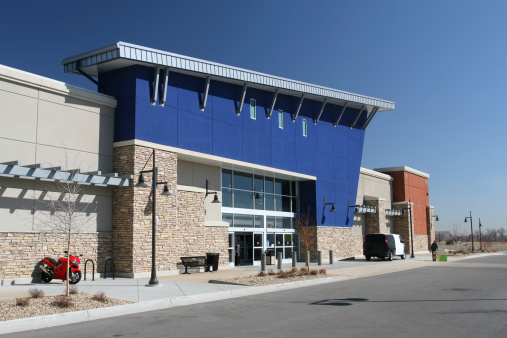By Cliff Ennico
Nothing – and I mean nothing – frightens a small business owner more than hearing that one of the “big box” retail chains — WalMart®, CostCo®, Lowes®, Home Depot® and the like – are moving into town.
It has never been easy for a small retailer to compete with the big chains, for two reasons:
- Big chain stores buy in massive quantities and negotiate tough terms with their vendors, passing these “volume discounts” on to their customers so they can offer the lowest prices available anywhere; and
- Big chain stores have almost unlimited floor space and can stock a wide (if not comprehensive) variety of inventory, enabling their customers to shop for everything they need under a single roof.
When you are up against a “big box” retailer (or any other enemy), you can’t win by playing against their strengths. A “big box” retailer’s biggest strength is price. If you are planning to compete with the “big box” retailers on price, fuhgeddaboudit. You will lose.
So what are the weaknesses of the “big box” retailer? I can think of three:
O they don’t offer service of any kind – their staff (usually) doesn’t know the merchandise, and won’t spend time helping you or answering questions;
- They don’t spend money on décor or “customer experience” – these places are giant warehouses with ugly industrial type lighting and few displays; and
- They are Hell to navigate – it takes forever sometimes to find what you’re looking for, and then you stand on a long line behind a bunch of contractors with pallets of lumber waiting to pay for your six-pack of dental floss.
Can you compete with “big box” retailers by offering better service and giving the customer a great experience? Many small business experts think you can.
But I disagree.
Small businesses almost always offer better service to their customers, and a better overall customer experience, than “big box” retailers. The problem is that customers don’t want to pay extra for them. They want the service, you betcha, but they also want the substantial discounts that “big box” retailers offer. Small businesses, because of their high overhead and limited floor space, rarely can afford to discount the way “big box” retailers can. And today’s digital world makes it easy for customers to find out exactly where the best deal is anywhere at a given time. The cards are stacked against small businesses here.
Thus the phenomenon of “showrooming,” where customers spend lots of time in a small retail shop asking millions of questions, trying everything on three times, and making a decision, then go home and buy the darn thing on Amazon for 40% off plus free shipping.
That leaves us with “convenience” as a way of competing against “big box” retailers, and here we’re on more solid ground.
“Big box” retailers are notoriously difficult to navigate. It’s hard to find what you want, lines are long, and it often takes hours between the time you walk in and the time you walk out with your merchandise. Also, because “big box” retailers look for low real estate costs, they tend to be located on the “wrong side of the tracks” far away from where their customers reside. Customers often have to travel 30 minutes or more to get to their nearest “big box” retailers.
If you are looking to spend hundreds of dollars buying a month’s worth of groceries in one shot, you probably will put up with the inconvenience of shopping at a “big box.” But not if you are buying just one filet mignon to impress a date this coming Saturday night.
And therein lies one of the keys to competing with a “big box.”
In the town where I live there’s a (really) small hardware store that has competed successfully with Home Depot® for over 20 years. It’s located at the heart of town, at a key intersection, next to a popular brew-and-burger restaurant that guarantees it lots of “ambient traffic.” Wherever you live in town, it takes only 5 to 10 minutes to get to this hardware store. To get to the Home Depot® will take you 20 to 30 minutes, longer on a busy Saturday.
But that’s not the main reason for this store’s success.
This store does not try to stock everything a hardware customer might need. They stock only the most common, or most requested, items. Lightbulbs. Garden tools. Fertilizer. Shovels. Rakes. Insect repellents. Kitchen cleaners. Only one or two brands, not 20. Their sales staff (generally only one or two people) can help you find anything in the store in less than 5 minutes.
People don’t leave this store with overflowing shopping carts. Most leave with just a small bag or two. But every customer leaves with a bag.
The key to this store’s success is not service. It is convenience and time management. You will not go to Home Depot® to buy one or two lightbulbs, and you surely won’t care that the local store charges a few pennies more for them.
More next week . . .
Cliff Ennico (cennico@legalcareer.com) is a syndicated columnist, author and host of the PBS television series ‘Money Hunt’. This column is no substitute for legal, tax or financial advice, which can be furnished only by a qualified professional licensed in your state. To find out more about Cliff Ennico and other Creators Syndicate writers and cartoonists, visit our Web page at www.creators.com. COPYRIGHT 2017 CLIFFORD R. ENNICO. DISTRIBUTED BY CREATORS SYNDICATE, INC.







